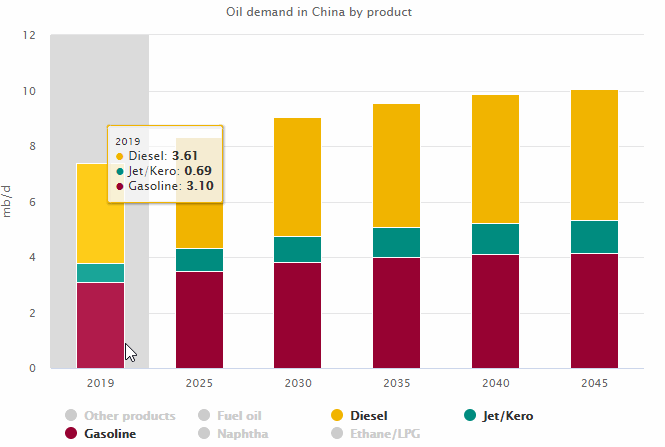Although there is plenty of news to make oil
investors anxious about their future returns on investments recently, according
to the latest analyses the world will still need oil for its survival around
2050, unless a miraculous substitute is around at that time.
The above graphs shows how the crude oil demand in
China is going to grow in order to meet its energy requirements until 2045; it’s
not a graph with a downward trend; on the contrary, it is going up in the
absence of a realistic substitute.
The trend in India, during the same period, is the
same. That means, the world’s second and third largest oil consumers will still
be in urgent need of the commodity to power up their respective economic
engines.
At present, the major oil companies are under
tremendous pressure, both from climate activists and politicians, to take measures
to reduce carbon emissions; as the world gets closer to the targets set by the
global bodies, the calls are only going to get louder and more frequent.
Of course, the big companies must invest more on
mitigating the environmental impact from the emissions; they need to do it with
a passion rather than appearing to be doing something for PR purposes.
If long-term investors feel uneasy about the way big
oil companies tackle the issue, then they have a right – and a reason - to
highlight it and make their grievances known to those at the top of these
global giants; the big oil companies have not scored their own goal yet on the
pitch of climate debate – unfortunately.
In this context, the oil investors are neither
rebels nor saboteurs; nor do their concerns border on so-called shareholder-dissent.
In the Middle East, countries like the UAE and Saudi
Arabia are making it plain and clear that they are bracing themselves for
post-oil future with plenty of strategies in place; even Nigeria, Africa’s
largest crude oil producer, says it is planning for the same.
Since the loss of demand of the commodity is not
solely determined by the aspiration of few, the ground realities will make it
indispensable for the next few decades.
The graphs of oil demand, both from China and India,
just show that reality; since both countries will have over 3 billion
inhabitants by 2050, the authorities will find it difficult look up to climate
goals at the expense of the welfare of such a big number of human beings.







